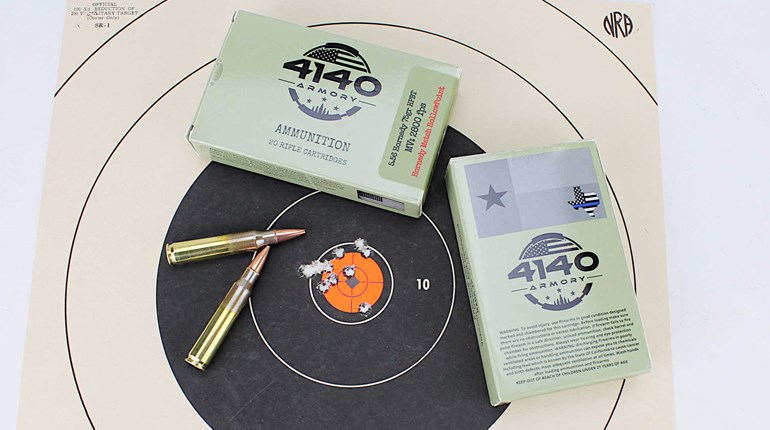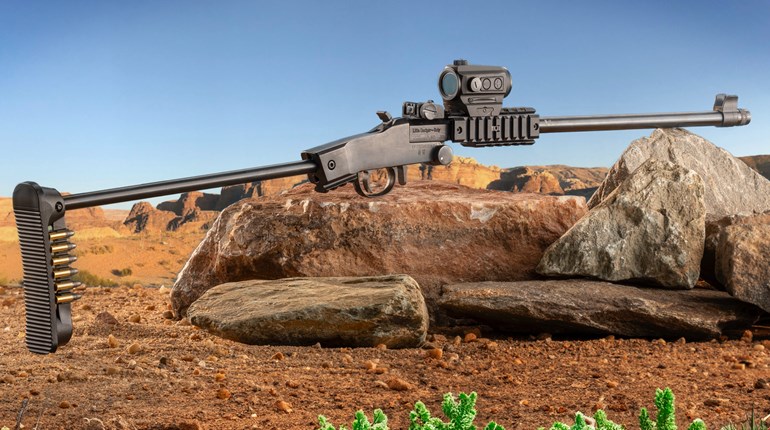
Official White Housephoto by Joyce N. Boghosian
The Trump administration recently published new rules that will benefit the U.S. firearms industry and gun owners.
This is one of those gun-control battles that won’t make many headlines. First, because, after many years, this bureaucratic struggle was sensibly settled. But most of all, because the mainstream media has no desire to give an honest explanation as to why the gun industry was treated so differently in this fight.
This all had to do with broad-based export-control reforms that happened to include the U.S. ammunition and firearms industries. The process for this was begun during the Obama administration. At the time, other industry sectors involved in this process benefitted from the reforms, as their oversight for exporting goods was moved from the U.S. Department of State to the import-export specialists at the U.S. Department of Commerce, but the Obama administration decided to exclude America’s firearms industry for political reasons.
They didn’t care that this was a problem that harmed small American businesses, such as gunsmiths. With the U.S. Department of State regulating these businesses, the federal government told gunsmiths they had to pay an annual $2,250 fee to comply with the Arms Export Control Act. This Act requires any business that manufactures, exports or imports a firearm (as it’s considered to be a “defense article”) to register with the government and pay $2,250 every year. Obama’s State Department extended the definition of “manufacturing,” however, to include many common upgrades or modifications to existing firearms, thus reaching gunsmiths who did not export their work.
The big manufacturers can eat that fee, but most gunsmiths are small, part-time businesses that specialize in fixing hunting and sporting-related firearms. They couldn’t afford to pay $2,250 every year.
Meanwhile, with the State Department in charge, gun and ammunition manufacturers also had to get congressional approval for all foreign orders over $1 million. If, say, an American gun company wanted to compete to sell more than $1 million in rifles to a NATO member, they had to first get State Department approval and then a thumbs-up from Congress. This congressional review was sometimes held up by anti-gun Democrats in the U.S. Senate who like to punish gun companies for being gun companies.
Other industries had similar issues before the reform process moved their oversight to Commerce. Yet the gun industry was being singled out by anti-gun politicians because they saw this as another way to restrict, smother and punish Second Amendment-related businesses.
When the Trump administration announced a final rule would be published to make this and other changes, these anti-Second Amendment activists made the claim that this would mean criminals would be able to manufacture 3D-printed guns.
The State Department had previously ruled that gun schematics that can be used by 3D printers to make gun parts can’t be posted on the Internet, as a non-U.S. citizen could conceivably download them, and that would be tantamount to an illegal export of a “defense article.”
Were this to become a real problem (and is hasn’t, though such programs have previously been released online), then wouldn’t it be better if Congress considered legislation instead of relying on a what-if scenario from the bureaucracy?
This was discussed on March 26, 2019 at the House Oversight and Investigations committee. Rep. Norma J. Torres (D-Calif.) spoke at this hearing and gave the anti-gun line by blaming U.S. gun manufacturers for arming criminal gangs, for not caring about human-rights issues and more as she objected to this rule change.
Despite fearmongering like this, this change doesn’t end oversight of firearm and ammunition exports. It will simply put most such transitions in the hands of the U.S. Commerce Department, which already consults with the State Department on defense-related export approvals. And the Commerce Department even changed the final rule to accommodate concerns about the uploading of 3D printer files for firearms and their parts to the Internet, clarifying that this would still be considered regulated activity.
“This is a tremendous achievement for the firearms and ammunition industry. We salute the Trump administration for modernizing our nation’s outdated Cold-War-era export controls and putting American manufacturers on an even playing field with their foreign competitors,” said Lawrence G. Keane, the National Shooting Sports Foundation’s senior vice president for government relations and public affairs and general counsel.
The new regulations become effective March 9, 2020.


































